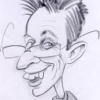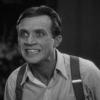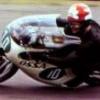-
Posts
638 -
Joined
-
Last visited
lesthegringo's Achievements

Obsessed Member (4/9)
330
Reputation
-
I might make some resin 3d Printed versions, it will allow me to have the end detail included for no extra work
-
I'm building a 1/8th scale P&W Wasp engine kit I picked up in the US, which I suspect is a relatively low volume issue kit. I'm sort of enjoying building it, but it is quite a lot of work to make as it needs a lot of fettling to clean up the parts. While I am happy to do work to make a kit look like a nice model, there are some 'improvements' that you have to do to the parts that really shouldn't be there, or are so difficult to correct that they end up making you reconsider whether to continue or not. The issues I am seeing are, in no particular order mismatched mould halves - for example the 18 push rods have mould slip that means that every single one needs to be substantially trimmed on both sides, which result in them being oval, and of course the ends have ribs that can't be fully corrected without removing the detail completely and scratch building. Oh, and the ends don't line up so when you trim they become too short and need spacers to restore the lengths Incredible amounts of flash and extra plastic, to the point where it means you have to really study everything to work out where the actual kit part ends. Not so bad if you have multiple of the same part so you can use one as a guide, but when you have a load of different parts and need to work out one by one with the need to trial fit each piece...... Incredibly thoughtless sprue gate placement and or size - swearing removed If you have a 'Y' shaped part, don't put the sprue gate in the valley of the top two lines! If you have an outer diameter with lots of tiny moulded on detail, don't put the (massive) sprue gates between the detail, use the face in front (Kinetic, I'm looking at you for the F-16 exhaust nozzle...). And don't get me started with some models' clear parts Ejector pin placement where it either destroys the part detail during the ejection process or elimination of the residual pin mark is impossible without ruining the detail (and I concede that ejector pins are a necessary evil) Semi circular parts that have concentric details that are not concentric, so no matter how carefully you try and assemble the two halves, you cannot make a part that has circular details as at least some of them will be mismatched *sigh* I feel better now Any more for the list? Les
-

1/48 Airfix Buccaneer wing vortex generators
lesthegringo replied to lesthegringo's topic in Aircraft Cold War
Thanks - looking at the pictures, seems like if the wings are folded it wouldn't be worth doing anything with the kit moulding -
Looking at the wing vortex generators, they seem relatively finely moulded, but are they reasonably to scale? I remember doing the Hasegawa Sea Harrier and (unusually for me) really liking the Eduard photo etched vortex generators due to the scale thickness improvement they gave. My worry is once they have a bit of primer and paint on them they will look too thick, but not being in a position to view a real airframe I'm wondering if they can be left alone or need some PE replacements Les
-

Granby Buccaneer air brake interior colour
lesthegringo replied to lesthegringo's topic in Aircraft Cold War
it's the new Airfix 1/48th Les -

Granby Buccaneer air brake interior colour
lesthegringo replied to lesthegringo's topic in Aircraft Cold War
Looking through all those photos, I see the prominent black sooty exhaust streaks, and looks like most have the outer side of the airbrakes thoroughly stained with soot too. A nice detail For the wing vortex generators, are they reasonably to scale? I remember doing the Hasegawa Sea Harrier and (unusually for me) really liking the Eduard photo etched vortex generators due to the scale thickness improvement Les -

Granby Buccaneer air brake interior colour
lesthegringo replied to lesthegringo's topic in Aircraft Cold War
Thanks all. I know the issue can be complicated by airframes painted to represent era schemes for displays. I can't imagine most Granby Bucc's were parked with the wings folded when actually in the middle East, but in my opinion they look interesting so may just bend reality a little -
Just picked up Airfix's new Buccaneer on a visit to the US. Looking through the instructions, the interior of the airbrakes for the Granby version are the exterior colour, but photos show them as grey Which is correct?
-
Unfortunately, unless I want 32 gallons of Hydrochloric (muriatic) acid, I can't get it here! Even then, I suspect I need to have some kind of business license. Cheers Les
-
Hi all, looking for some advice on making some parts from some 0.010" brass sheet. I tried etching it using the stuff I have for etching PCB's (it's a white crystalline product, not sure exactly what) but unless I use some electric assistance it does nothing. Even with it, it takes a long time so is obviously the wrong stuff. My problem is that where I am, Ferric Chloride is not available, and in fact a lot of stuff is not available. I may be able to get some battery acid, but beyond that I am not certain. I am not worried about sure detailed stuff, this is more for making gantries and other structures where a thin lattice is used, the intention is for model railway use So can anyone recommend a technique that uses commonly available products? For info, the masking technique I would use is spray paint which is etched off with a CNC laser engraver Cheers Les
-
Hi All, I have a set of Eduard 1/48 RBF tags that came with one of the Tornado Big Ed sets, which were obviously going to be used with some Brit aircraft like the Lightning, Tornado, Buccaneer etc but I envisaged also that they would be appropriate for similar era US jets. Trouble is that they come out at a scale 55 inches long, which seems vastly too long for the scale, and based on what few pictures I have think they should be a LOT shorter. I know it wouldn't be a 'one size fits all' but what sort of length and width should they be in reality? Cheers Les
-
I suppose they have to try things to see what works - for me that's where PE is obviously being over used due to the simplicity of incorporating extra bits on a fret, once you have the design it doesn't cost them anything significantly extra in tooling. I don't blame them, they are out to make money for themselves, but like everything, some methods are better suited to certain tasks I didn't see the Quinta slime lights, will check it out. However harking back to those Eduard Superfabric belts, they were very thin and flexible, so maybe it's a question of adapting processes to applications As an aside, I am a little surprised at Eduard's PE for the 1/48 Airfix Buccaneer not having the vortex generators, which would have fallen into the right category of part. Les
-
I have used this particular forum for this subject simply because the subject matter in my mind right now are cold war aircraft, but realistically this should be in a generic modelling thread - if someone wants to move it to somewhere more appropriate that's fine I have previously espoused my dislike for photo etch, but have obviously used it many times due to it often being the only way to economically add certain details. Colour photo etch can look great, but very often you have to take care where the edges show, they are a pain when conforming to less than flat surfaces, I've had mixed results in getting them to adhere (even self adhesive ones) despite using specifically made adhesives..... I am sure none of this is news to most. But there are other aspects that also grate - for example, the slime lights on a jet, where the PE parts are applied, and they are (using a 0,2mm thick part on a 1/48th model) a scale 10mm thick, nowhere near scale. As for seat belts? Don't get me started But in the last few years some new stuff has come along that makes me wonder why a lot of parts are not being offered another way. For instance, Eduard a while back did a line called Superfabric belts. Now I don't know if they were the forerunner of 3D printed decals, but I have used them on a number of models (MiG 21, F4 to name a couple off the top of my head) and they were brilliant. Much better than PE. The same goes for the new 3D printed decals, I have used the Quinta Studios ones, and both for the cockpit instruments and for the seat belts, the results are far far in excess in terms of quality and finished look than anything that PE, coloured or otherwise, can achieve, at least in my hands. You can bet I will use them on a Gulf War Buccaneer that I intend to build including the MDC, for which I am aware of no alternative So why are the 3d printed decals not being used for other parts? Slimelights seem an obvious choice. Any strengthening or scab plates, the inside of undercarriage doors and wheelbays, chaff dispensers, pylon external details, those bomb kits strapped on to dumb bombs to convert their use, canopy seals and canopy sills....... I understand that purists will rail at the thought of diluting the skills, and I accept that as a discussion point. However if we are going to have aftermarket parts to improve our kits, I think they should at least be good ones and I am of the opinion that modern techniques could vastly improve a lot of the existing ones. Granted, some PE stuff like vortex generators, wing fences, missile fins are probably impossible to improve upon, but think there's a lot being left out there to pick up Thoughts? Les
-
Has anyone used this, and if so are you able to comment on whether this is similar to Gunze Leveling Thinner? The latter seems increasingly unobtainable, so maybe this is an alternative Les







